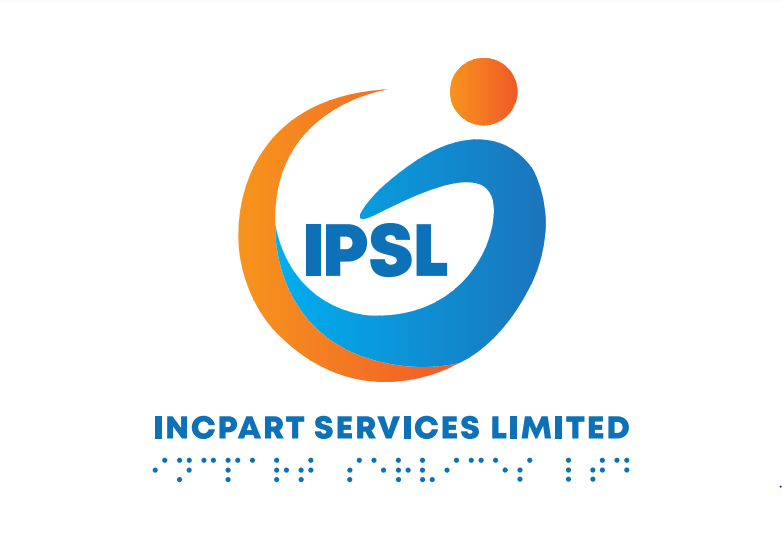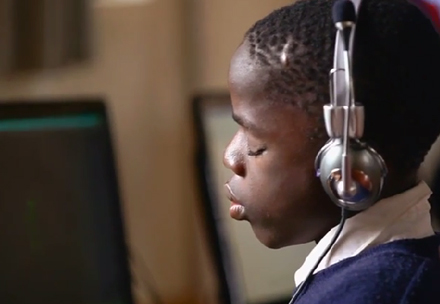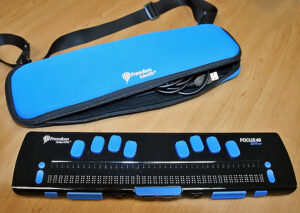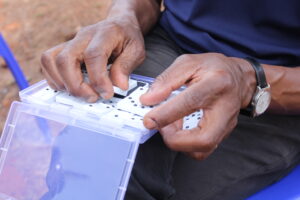The visually impaired face many challenges in their daily lives, from navigating streets to accessing information online. However, technology has made great strides in providing assistance to those with visual impairments. Assistive devices are designed to enhance independence and improve quality of life for the visually impaired. From mobility aids like canes, to computer software and hardware solutions like screen readers and braille displays, there are many options available to help individuals with visual impairments. In this article, we will explore some of the most commonly used assistive devices for the visually impaired, as well as the benefits they provide.
Introduction to Assistive Devices for the Visually Impaired
Living with a visual impairment can be challenging, but technological advancements have made it easier for individuals to manage their daily lives. Assistive devices for the visually impaired come in various forms, including mobility aids, screen readers and magnifiers, and braille devices. These assistive technologies help individuals with visual impairments to navigate their environment, access information, and communicate with others.
Understanding the challenges faced by visually impaired individuals
Visually impaired people face significant challenges while navigating their environment, such as difficulty in identifying obstacles or finding directional cues. They also face problems accessing information and technology that use visual interfaces, such as computers or smartphones. These challenges can lead to difficulties in finding employment or engaging in social activities, leading to feelings of isolation and depression.
Overview of assistive devices and their benefits
Assistive devices for the visually impaired help mitigate these challenges and enable individuals with visual impairments to lead more independent lives. These devices use various technology and specialized features to help individuals with visual impairments to perform tasks such as reading, writing, and moving around safely. Assistive devices can improve access to technology, enhance social interaction and communication, and help individuals with visual impairments to be more productive and independent.
Mobility aids: Canes, guide dogs, and electronic travel aids
Mobility aids are devices that help individuals with visual impairments move around independently and safely. These aids include canes, guide dogs, and electronic travel aids.
Canes: Types and usage
Canes come in different types and sizes, such as long white canes that help detect obstacles or identify drop-offs in terrain. Other types of canes include support canes and folding canes for ease of transport.
Guide dogs: Training and benefits
Guide dogs are highly trained animals that help individuals with visual impairments navigate their environment safely. These dogs are trained to obey commands and alert their owners to dangers such as traffic, stairs or low-hanging obstacles.
Electronic travel aids: GPS and navigation devices
Electronic travel aids use advanced technology to enhance mobility for visually impaired individuals. These aids include GPS devices, which give audible directions and provide location information for their users. Mapping applications and navigational aids such as beacons can also enhance mobility.
Screen readers and magnifiers: Computer software and hardware solutions
Screen readers and magnifiers are computer software and hardware solutions that help individuals with visual impairments read and access information on a computer.
Screen readers: How they work and popular options
Screen readers use speech synthesis or Braille output to read text on a computer screen. These software programs can be customized to suit the user’s reading preferences and work with popular applications such as web browsers, email clients, and word processing software.
Magnifiers: Types and features
Magnifiers are hardware solutions that enlarge text on computer screens or printed documents. These devices come in different forms, such as handheld or desktop magnifiers, and can be customized to suit individual needs.
Computer hardware solutions: Braille displays and keyboards
Braille displays and keyboards are specialized hardware solutions that allow individuals with visual impairments to interface with computers in Braille instead of visual text. These devices use refreshable Braille cells to display computer text in Braille.
Braille devices: Displays, printers, and notetakers
Braille devices are specialized hardware solutions that help individuals with visual impairments read, write, and interact with their environment using Braille.
Braille displays: Types and usage
Braille displays allow users to read computer text in Braille. These devices come in different sizes and configurations, from portable displays to full-page refreshable Braille displays.
Braille printers: Print-to-braille options
Braille printers translate text from a computer document into Braille output. These printers can produce Braille pages in different sizes and formats.
Notetakers: Features and benefits
Notetakers are specialized devices that help individuals with visual impairments take notes in Braille. These devices come with features such as text-to-speech, audio recording, and Braille input to help users stay organized and productive.
Talking watches, clocks, and other household devices
For people with visual impairments, completing everyday tasks such as checking the time or adjusting the temperature in their home can be difficult. However, assistive technology has made huge strides in recent years to help make these tasks easier to manage. Talking watches, clocks, and other household devices are just some of the many examples of technology designed to assist those with visual impairments.
Talking watches and clocks: Features and usage
Talking watches and clocks are designed to verbally announce the time and sometimes even the day and date. Some models come with additional features such as an alarm or stopwatch. The operation of these devices is usually straightforward with clear instructions provided. They are also often designed with large, easy to read buttons and a simple interface. Talking watches and clocks are a useful aid for those who have difficulty reading or seeing traditional timepieces.
Talking household devices: Thermostats, scales, and more
In addition to watches and clocks, there are many other household devices that can incorporate speech technology to assist those with visual impairments. Talking thermostats allow users to verbally set the temperature in their home while talking scales assist with weight management. Other devices include talking blood pressure monitors and talking kitchen appliances such as microwaves and ovens. These devices help people with visual impairments become more independent in their daily lives.
Assistive technology for education: Braille displays and note-taking devices
For students with visual impairments, assistive technology can be a vital tool. Braille displays and note-taking devices are two examples of technology that have been specifically designed to assist with educational tasks.
Braille displays for education: Types and benefits
Braille displays are devices that translate digital text into braille. They can be connected to a computer or a mobile device, allowing the user to read and interact with a range of digital content. There are various types of braille displays available, including those with a refreshable braille cell display and those with a more traditional braille output. Braille displays help students with visual impairments study more efficiently and independently.
Note-taking devices: Features and usage
Note-taking devices can record lectures or meetings and often feature speech-to-text technology that converts spoken words into written text. They also include a feature for note-taking that allows the user to capture their own thoughts and ideas. These devices help students with visual impairments follow along in a lecture or meeting, and take notes more efficiently.
Advancements in assistive technology for the visually impaired
Advancements in technology over the past few years have led to the development of new and exciting assistive devices for the visually impaired.
New and emerging technologies: Virtual reality and smart home integration
Virtual reality is a technology that has shown potential to assist those with visual impairments. It can be used to simulate real-life scenarios and environments, allowing users to practice movements and explore new surroundings. In addition, smart home technology has the potential to help those with visual impairments navigate their homes more easily. Voice-activated devices that control lighting, audio, and other home features can make everyday tasks much more manageable.
Future possibilities: Artificial intelligence and autonomous vehicles
Artificial intelligence has the potential to transform the way people with visual impairments navigate the world. For example, advanced image recognition technology can be used to identify objects and people in real-time. Additionally, autonomous vehicles have the potential to revolutionize transportation for those with visual impairments, allowing them to travel more independently and safely.
Conclusion: The impact of assistive devices on the lives of the visually impaired
Assistive technology has changed the lives of people with visual impairments, making everyday tasks and educational pursuits easier to manage.
Personal stories and examples of how assistive devices have improved quality of life
The impact of assistive technology can be seen in the stories of users whose lives have been transformed. For example, a student with a visual impairment may have struggled to keep up with schoolwork without a braille display. But, with the help of this technology, they are now able to stay on top of their studies and excel academically. Similarly, a senior citizen who has trouble seeing the time on a traditional watch can now easily keep track of the time with a talking watch, allowing them to maintain their independence and continue their daily routines. Assistive technology has the potential to change lives and improve the quality of life for people with visual impairments.Assistive devices for the visually impaired have come a long way in recent years, thanks to advancements in technology. From mobility aids to computer software and hardware solutions, there are many options available to improve the lives of those with visual impairments. These devices provide greater independence, enhance accessibility, and improve quality of life. As technology continues to advance, we can expect even more innovative solutions to help those with visual impairments live fuller and more connected lives.
Frequently Asked Questions (FAQ)
What are assistive devices for the visually impaired?
Assistive devices for the visually impaired are designed to help individuals with visual impairments overcome daily challenges and improve their quality of life. These devices include mobility aids like canes and guide dogs, computer software and hardware solutions like screen readers and braille displays, and talking household devices like clocks, scales, and thermostats.
How do assistive devices for the visually impaired work?
Assistive devices for the visually impaired work by enhancing accessibility and providing greater independence. Mobility aids like canes and guide dogs help individuals navigate their surroundings, while computer software and hardware solutions like screen readers and braille displays provide access to digital information. Talking household devices and other assistive technology enhance accessibility and convenience.
What are the benefits of using assistive devices for the visually impaired?
The benefits of using assistive devices for the visually impaired are numerous. These devices provide greater independence and autonomy, and they enhance accessibility to information and physical surroundings. Assistive devices also help individuals with visual impairments participate more fully in everyday activities, improving their overall quality of life.
How do I choose the right assistive device for me or a loved one with a visual impairment?
Choosing the right assistive device for a visually impaired individual will depend on their specific needs and preferences. It’s important to consult with a healthcare professional or an assistive technology specialist to determine the best device for the individual’s needs. Factors to consider include the individual’s level of vision, their mobility needs, and their personal preferences.




I was very pleased to uncover this web site. I want to to thank you for your time due to this fantastic read!! I definitely appreciated every bit of it and I have you bookmarked to look at new things on your website.